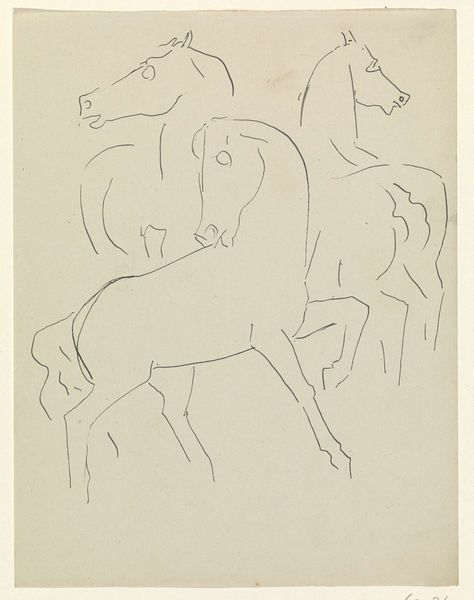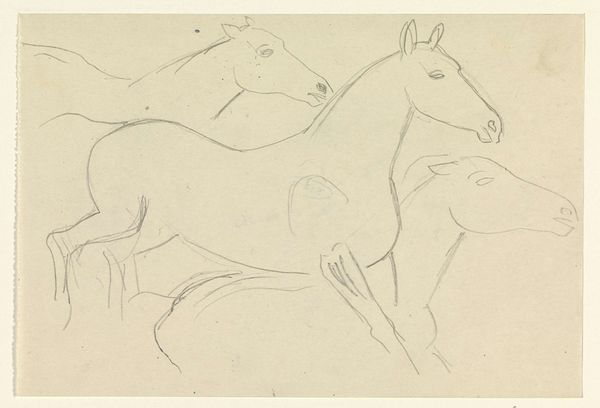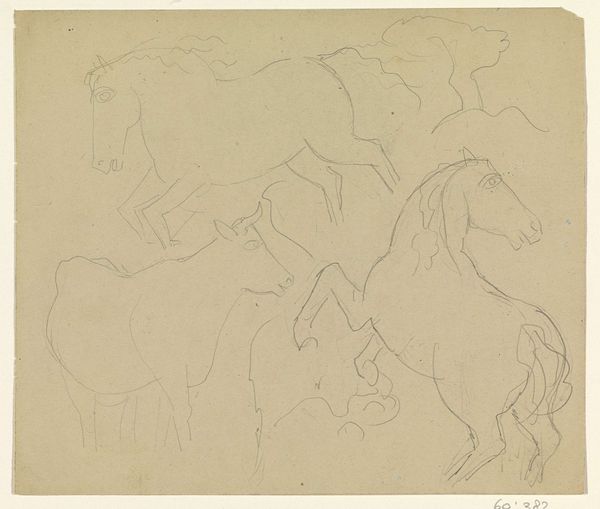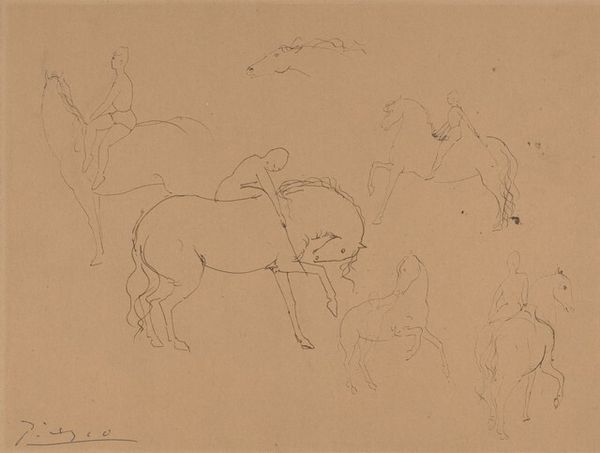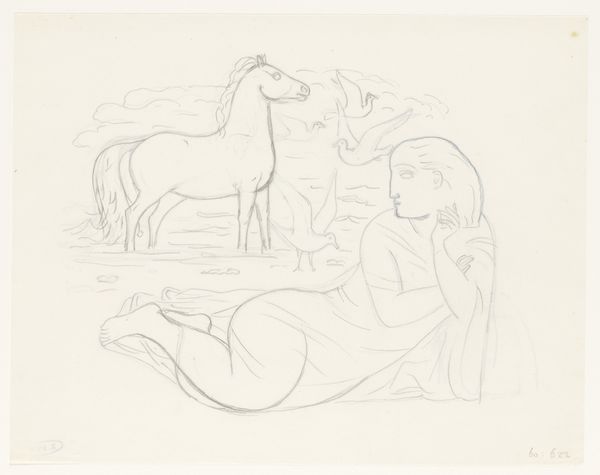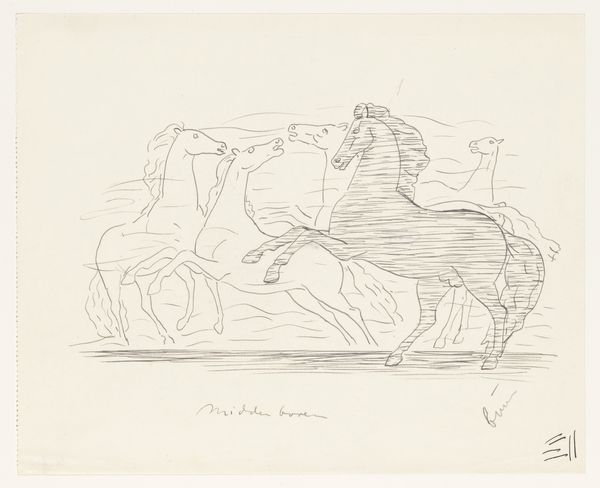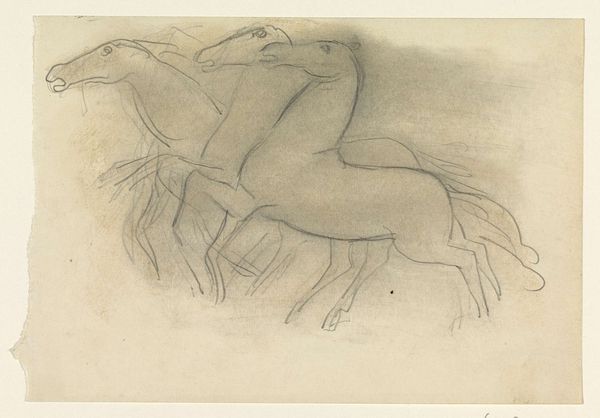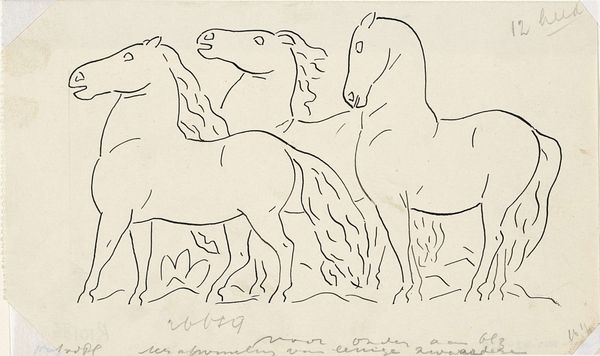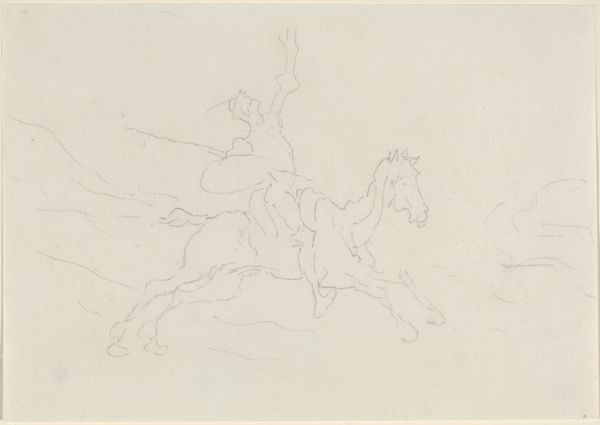
drawing, print, etching, paper, ink, pencil, graphite, pen
drawing
neoclacissism
etching
pencil sketch
greek-and-roman-art
etching
figuration
paper
ink
pencil drawing
pencil
line
graphite
pen
history-painting
academic-art
Dimensions: 354 × 258 mm
Copyright: Public Domain
Curator: Here we have a "Copy of Calvary from the Parthenon Frieze" by John Flaxman. It’s an etching printed with pen, ink, graphite and pencil on paper. Editor: Striking. Even in this unfinished state, the dynamic tension is palpable, especially within the musculature of the horses. Curator: Indeed. Flaxman was working in the Neoclassical style, which looked back to classical antiquity for inspiration. You see this particularly in the emphasis on line and idealized forms. The Parthenon frieze itself, of course, held immense symbolic weight for the Ancient Greeks, a depiction of the Panathenaic procession honoring Athena. Editor: Yes, and Flaxman distills that classical grandeur down to its purest linear form. The etching process, with its stark lines, perfectly suits the Neoclassical aesthetic. The figures almost seem to float, an effect enhanced by the minimal shading and open composition. Curator: The interesting element is the idea of a ‘copy.’ This raises the question, what is lost, or perhaps gained, when we create facsimiles of cultural symbols? This work stands as a symbolic gesture acknowledging cultural memory while creating a reproduction. Editor: Semiotically, it shifts the symbol, doesn’t it? Flaxman, through his specific choices in line and composition, recreates that symbolism. He translates the emotionality and meaning from one medium to another—from marble to etching. It's like he’s creating a new cultural artifact derived from another. Curator: So, in a way, it becomes a document reflecting not just Ancient Greek culture, but also the values and artistic sensibilities of Flaxman’s time. A reinterpretation that carries its own set of codes and symbols. Editor: Absolutely. It provides a powerful demonstration of the enduring strength and malleability of form across time and mediums. Curator: It really encourages a reflection on the act of artistic reproduction and the dialogues across cultural movements. Editor: A study in essence. It shows so simply what the Frieze is structurally and thematically, the dynamism it projects.
Comments
No comments
Be the first to comment and join the conversation on the ultimate creative platform.

